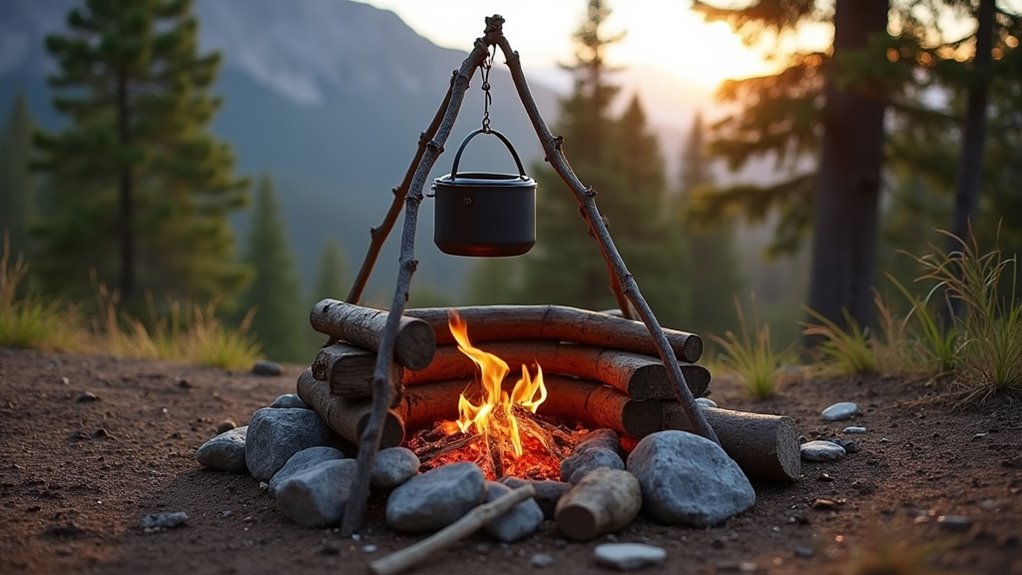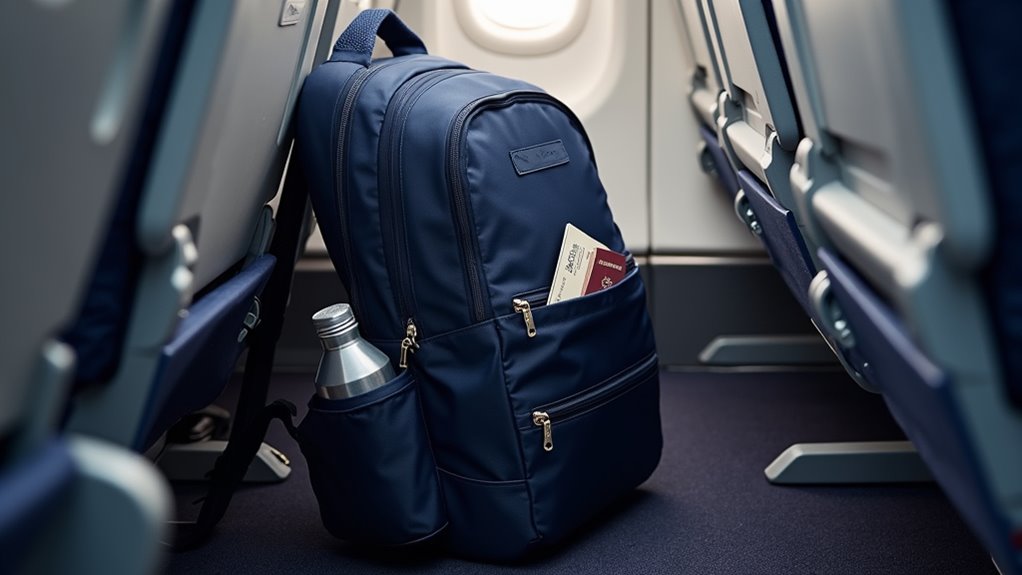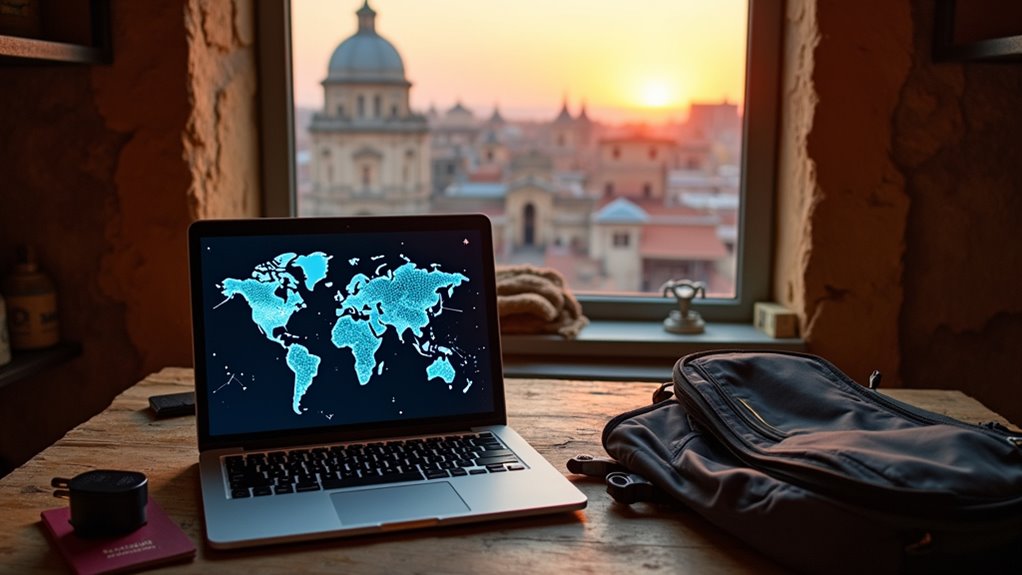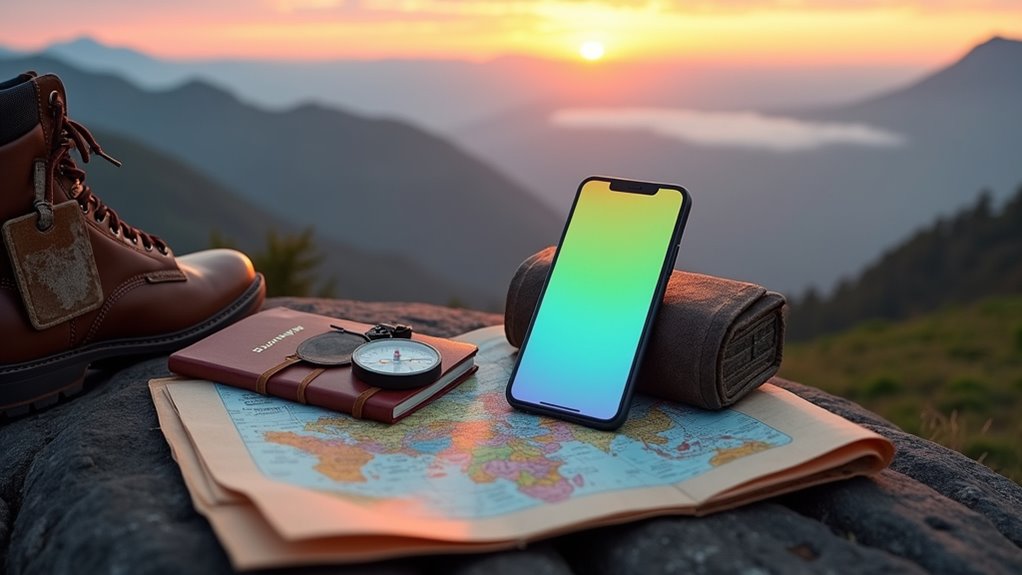To build a cooking fire while backpacking, choose a sheltered, flat spot free of flammable debris and, if possible, use an existing fire ring to minimize impact. Begin with dry tinder, add small kindling, and use sturdy logs for lasting heat. Arrange wood in a cone or log cabin structure to guarantee steady airflow and reliable flames. For cooking, use coals rather than open flames, and always have water or soil ready to extinguish the fire completely. The next steps cover essential fire safety and site restoration practices.
When planning to cook over an open flame during a backpacking trip, building a reliable and safe fire is essential for food preparation and warmth. Start by selecting a sheltered spot protected from the wind, as this guarantees your flame remains steady and reduces risk. Look for a flat, non-flammable surface—bare soil or sand works best—or use an established fire ring to contain your fire. Clear the area of any leaves, twigs, or other flammable debris to prevent accidental spread. If wind protection is limited, dig a shallow pit and consider placing stones around the perimeter to block gusts and reflect heat toward your cooking area.
Understanding your fire’s fuel is critical. Begin with tinder—small, dry materials like leaves, grass, or moss—which ignite easily. Next, add kindling; small sticks that burn longer and generate enough heat to catch larger logs on fire. Reserve wrist-thick logs or larger pieces for sustained heat, especially when you need a steady bed of coals for cooking. Always pack reliable fire-starting tools, such as waterproof matches or commercial firestarters, and bring backup tinder for difficult weather conditions.
Choose a fire structure based on your cooking needs and available resources. A cone structure—kindling arranged around a central pile of tinder—provides a quick, steady flame. The log cabin method uses a crisscross base for stability, while the upside-down or pyramid stack burns cleanly from the top down. A star fire, with sticks radiating toward a central tinder bundle, offers efficient burning with easy fuel management. Some structures, like the log cabin fire, create a stable cooktop surface that is ideal for preparing meals such as foil packets or Dutch oven dishes.] Confirm each structure allows air circulation, which is essential for a consistent burn.
When lighting your fire, ignite the tinder first and gently blow at the base to add oxygen. Gradually add kindling, then larger fuel as the flame strengthens. Maintain airflow by spacing wood and adjusting embers for heat control. For cooking, use coals rather than flames, arranging pots or grills over even beds of embers.
Always keep water or soil nearby to extinguish the fire thoroughly, follow local regulations, and restore the site to its natural state, leaving no trace.









